Certificate of Attendance - MCH23
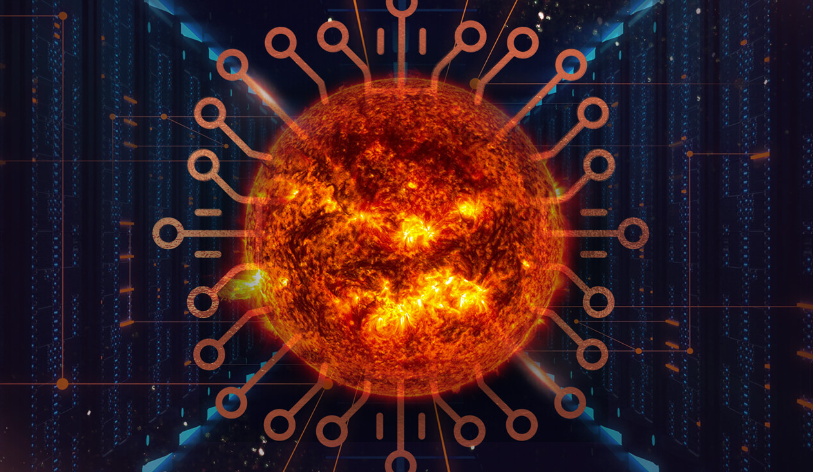 We are delighted to announce that Adam Dustor, a member of the Silesian University of Technology Observatories team, recently attended the "International Workshop on Machine Learning and Computer Vision in Heliophysics 2023" in Sofia, Bulgaria. This hybrid interdisciplinary workshop, held from April 19 to 21, 2023, focused on the applications of Computer Vision and Machine/Deep Learning techniques to heliophysics research and forecasting frameworks. The workshop also explored the integration of these techniques into modeling efforts of solar and heliospheric phenomena. Adam received a certificate of attendance for his participation in this informative event, which will undoubtedly help to enhance our observatory's research in the field of heliophysics. Congratulations, Adam!
We are delighted to announce that Adam Dustor, a member of the Silesian University of Technology Observatories team, recently attended the "International Workshop on Machine Learning and Computer Vision in Heliophysics 2023" in Sofia, Bulgaria. This hybrid interdisciplinary workshop, held from April 19 to 21, 2023, focused on the applications of Computer Vision and Machine/Deep Learning techniques to heliophysics research and forecasting frameworks. The workshop also explored the integration of these techniques into modeling efforts of solar and heliospheric phenomena. Adam received a certificate of attendance for his participation in this informative event, which will undoubtedly help to enhance our observatory's research in the field of heliophysics. Congratulations, Adam!Annother milestone in exoplanet observations by SUTO
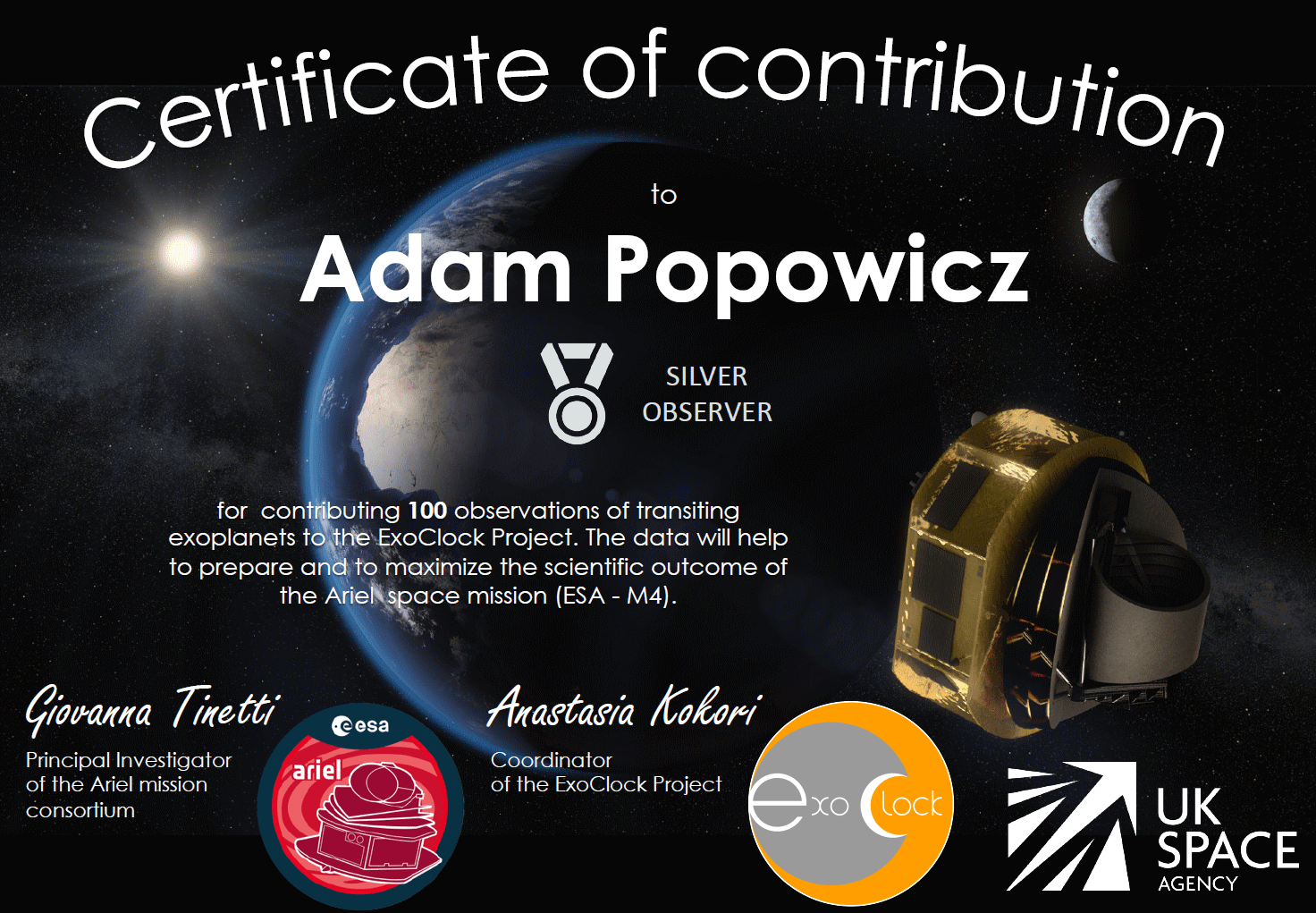 Another milestone has been reached in our observations of exoplanet transit. The silver medal for >100 observations has been granted to as from the ExoClock project. The certificate is co-signed by the PI of the Ariel consortium mission Giovanna Tinetti. We hope to keep this improtant international collaboration active throughout the whole Ariel mission planned to start on 2029. We are excited to be a part of exploring mission which will deeply investigate distant worlds in the Universe.
Another milestone has been reached in our observations of exoplanet transit. The silver medal for >100 observations has been granted to as from the ExoClock project. The certificate is co-signed by the PI of the Ariel consortium mission Giovanna Tinetti. We hope to keep this improtant international collaboration active throughout the whole Ariel mission planned to start on 2029. We are excited to be a part of exploring mission which will deeply investigate distant worlds in the Universe.
Promotion of technical aspects of astronomy
SUTO contribution to HOYS
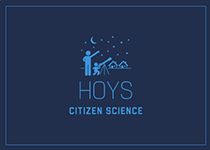 We are proud to be mentioned as one of the most significant contributors to HOYS project lead by University of Kent, University of St. Andreas and University of Dundee. We have already provieded over 6.5% of images of their database, which is 5000 unique measurements of hot young stellar objects over the last 2 years. See more at this site.
We are proud to be mentioned as one of the most significant contributors to HOYS project lead by University of Kent, University of St. Andreas and University of Dundee. We have already provieded over 6.5% of images of their database, which is 5000 unique measurements of hot young stellar objects over the last 2 years. See more at this site.
New high-impact papers by SUTO
 Two new papers co-authored by SUTO members have been just published in high-impact journal: The Astronomical Journal Supplement Series: "ExoClock Project. III. 450 New Exoplanet Ephemerides from Ground and Space Observations" and "The TESS Grand Unified Hot Jupiter Survey. II. Twenty New Giant Planets". We are happy to be a part in these new discoveries in the field of exoplanets research.
Two new papers co-authored by SUTO members have been just published in high-impact journal: The Astronomical Journal Supplement Series: "ExoClock Project. III. 450 New Exoplanet Ephemerides from Ground and Space Observations" and "The TESS Grand Unified Hot Jupiter Survey. II. Twenty New Giant Planets". We are happy to be a part in these new discoveries in the field of exoplanets research.
Certificate for exoplanet research
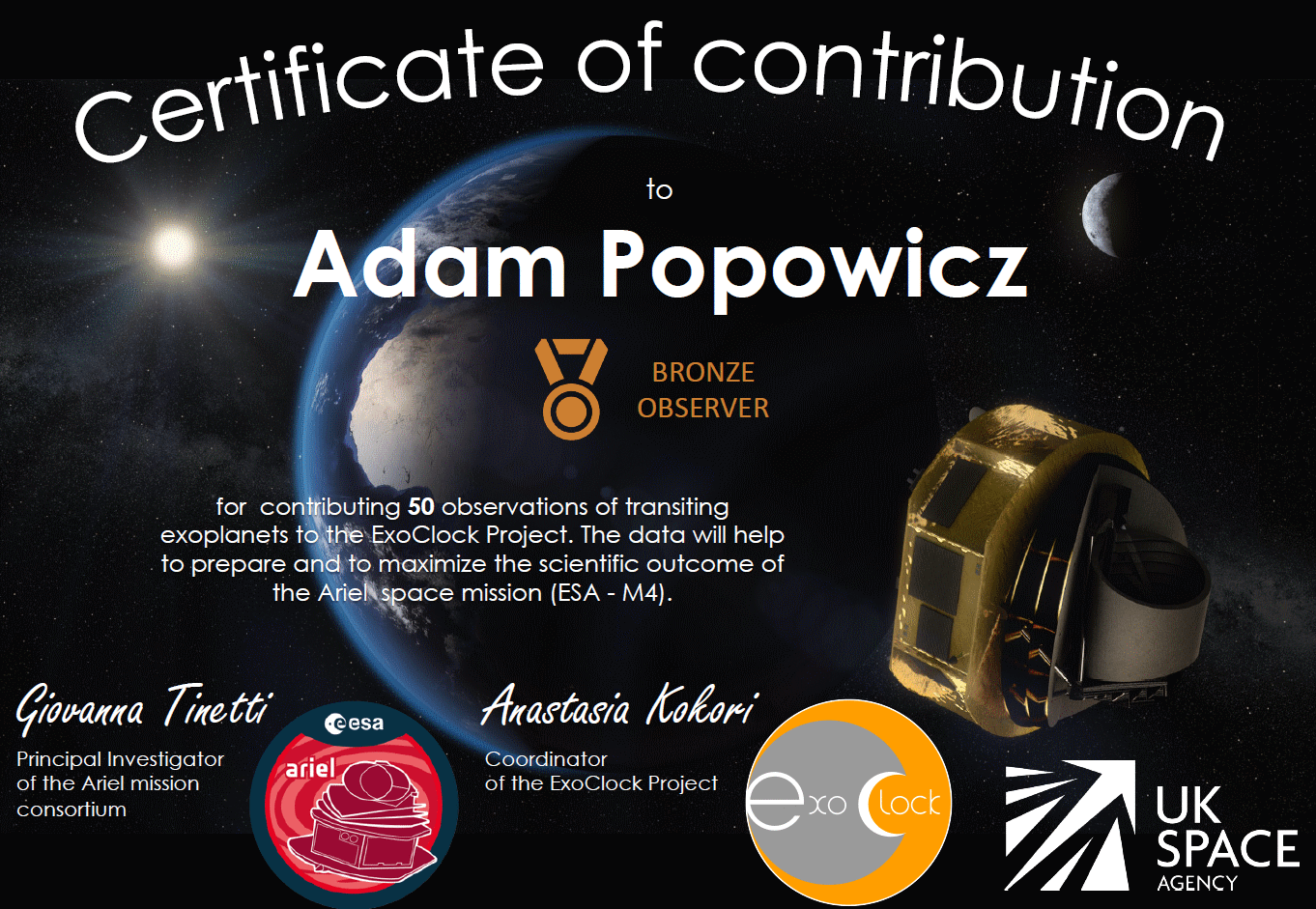 We are happy to be granted with a certificate from ExoClock and Ariel space mission for continuous and significant efforts for the exoplanet research. We have been participating in these important research projects for three years providing measurements of 50 exoplanet trasints during this period. We hope to be useful for the coming years and for the Ariel mission planned for 2029.
We are happy to be granted with a certificate from ExoClock and Ariel space mission for continuous and significant efforts for the exoplanet research. We have been participating in these important research projects for three years providing measurements of 50 exoplanet trasints during this period. We hope to be useful for the coming years and for the Ariel mission planned for 2029.
High-resolution SUTO-Solar dataset
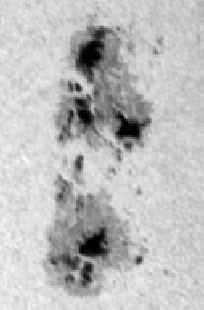 We are pleased to inform, that a new paper describing a new dataset of turbulence-degraded images was just published at https://www.mdpi.com/1424-8220/22/20/7902. We present a collection of almost 10,000 series of images depicting various photosperic and chromospheric structures on solar disk as registered through turbulent atmosphere. Reference images obtained via MFBD are provided to test future image processing algorithms for resolution enhancement. Please see the original dataset at https://doi.org/10.5281/zenodo.7064324.
We are pleased to inform, that a new paper describing a new dataset of turbulence-degraded images was just published at https://www.mdpi.com/1424-8220/22/20/7902. We present a collection of almost 10,000 series of images depicting various photosperic and chromospheric structures on solar disk as registered through turbulent atmosphere. Reference images obtained via MFBD are provided to test future image processing algorithms for resolution enhancement. Please see the original dataset at https://doi.org/10.5281/zenodo.7064324.
Paper in GRANDMA project
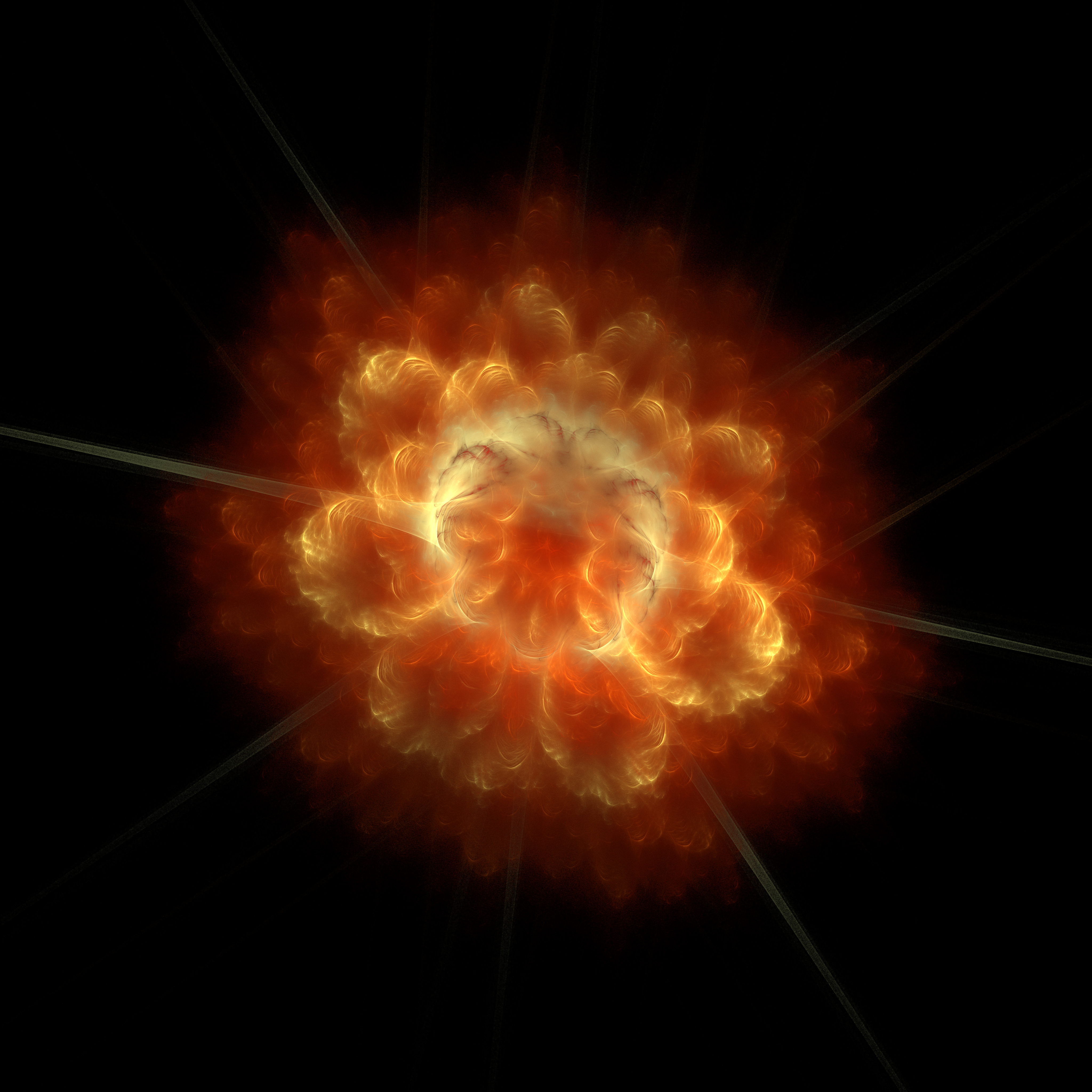 We are happy to inform that the first paper on kilonova candidates was published by GRANDMA project team. SUTO osbervatories were utilized in this undertaking to follow up the alerts of Zwicky Transiet Facility (ZTF). Togather with other 37 telescopes around the word, GRANDMA team observed 6 candidates classfieing them either as new planetoids or as supernova events. Still, no kilonova event was found in this search. We are still on our way to find these very rare and powerful phenomena using optical photometric follow-up. The original paper can be found here.
We are happy to inform that the first paper on kilonova candidates was published by GRANDMA project team. SUTO osbervatories were utilized in this undertaking to follow up the alerts of Zwicky Transiet Facility (ZTF). Togather with other 37 telescopes around the word, GRANDMA team observed 6 candidates classfieing them either as new planetoids or as supernova events. Still, no kilonova event was found in this search. We are still on our way to find these very rare and powerful phenomena using optical photometric follow-up. The original paper can be found here.
First paper on Hot Jupiters
 The first paper on hot Jupiters detected by TESS with collaboration with SUTO observatories has just appeared. We are proud to be co-authors of this international work in collaboration with best universities in the Word (Oxford, MIT, etc.). Future research is ongoing and we hope to be one of the most useful observatory networks in these exciting discoveries. The paper by Sam Yee can be accessed here.
The first paper on hot Jupiters detected by TESS with collaboration with SUTO observatories has just appeared. We are proud to be co-authors of this international work in collaboration with best universities in the Word (Oxford, MIT, etc.). Future research is ongoing and we hope to be one of the most useful observatory networks in these exciting discoveries. The paper by Sam Yee can be accessed here.
Grant for MFBD
 Our PhD student Piotr Jozwik-Wabik has received funding for a grant in the university's "New Research Areas" competition. The research topic will be the application of Multi-Frame Blind Deconvolution (MFBD) methods to improve solar images from the SUTO-Solar telescope. MFBD methods are commonly used in large solar telescopes, where they help combat the effects of turbulence on imaging resolution. The first attempts at state-of-the-art MFBD methods from Mats Lofdahl suggest that these methods can also be very effective on the smallest telescopes. We plan to integrate these methods with the solar station at Kotulin to enrich the data available from this observatory on our website.
Our PhD student Piotr Jozwik-Wabik has received funding for a grant in the university's "New Research Areas" competition. The research topic will be the application of Multi-Frame Blind Deconvolution (MFBD) methods to improve solar images from the SUTO-Solar telescope. MFBD methods are commonly used in large solar telescopes, where they help combat the effects of turbulence on imaging resolution. The first attempts at state-of-the-art MFBD methods from Mats Lofdahl suggest that these methods can also be very effective on the smallest telescopes. We plan to integrate these methods with the solar station at Kotulin to enrich the data available from this observatory on our website.
Observations at SPM 2.1m
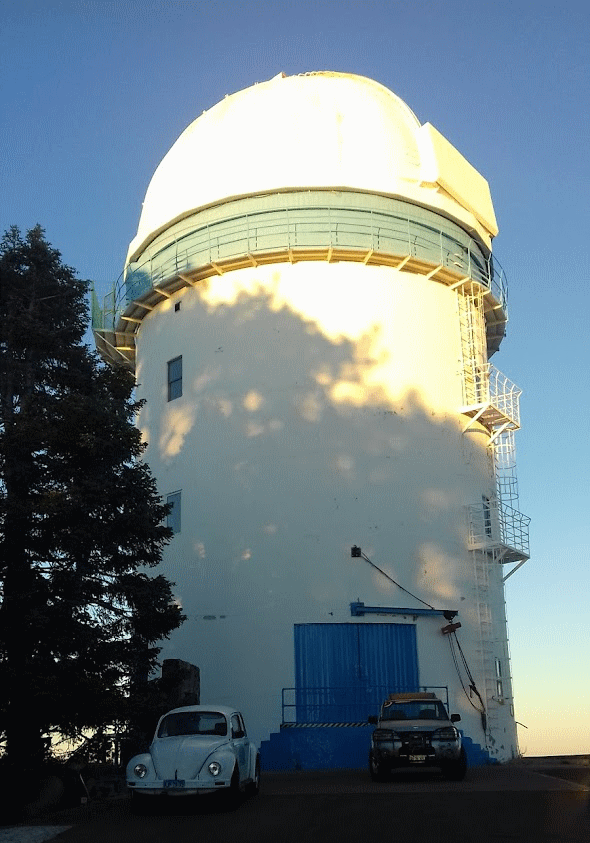 Together with Dr. Valeri Orlov from UNAM and Dr. David Ciardi from NASA, we have submitted a proposal for high-resolution observations of objects around which the TESS mission has detected potential exoplanets. These would be the first such observations at Mexico's National Observatory on the 2.1m telescope at San Pedro Martir. We intend to make similar observations for the TESS mission on the 1.0m telescope at Tonantzintla. However, conditions at the top of San Pedro Martir are extremely favorable for high-resolution observations using speckle interferometry.
Together with Dr. Valeri Orlov from UNAM and Dr. David Ciardi from NASA, we have submitted a proposal for high-resolution observations of objects around which the TESS mission has detected potential exoplanets. These would be the first such observations at Mexico's National Observatory on the 2.1m telescope at San Pedro Martir. We intend to make similar observations for the TESS mission on the 1.0m telescope at Tonantzintla. However, conditions at the top of San Pedro Martir are extremely favorable for high-resolution observations using speckle interferometry.
Conference distinction
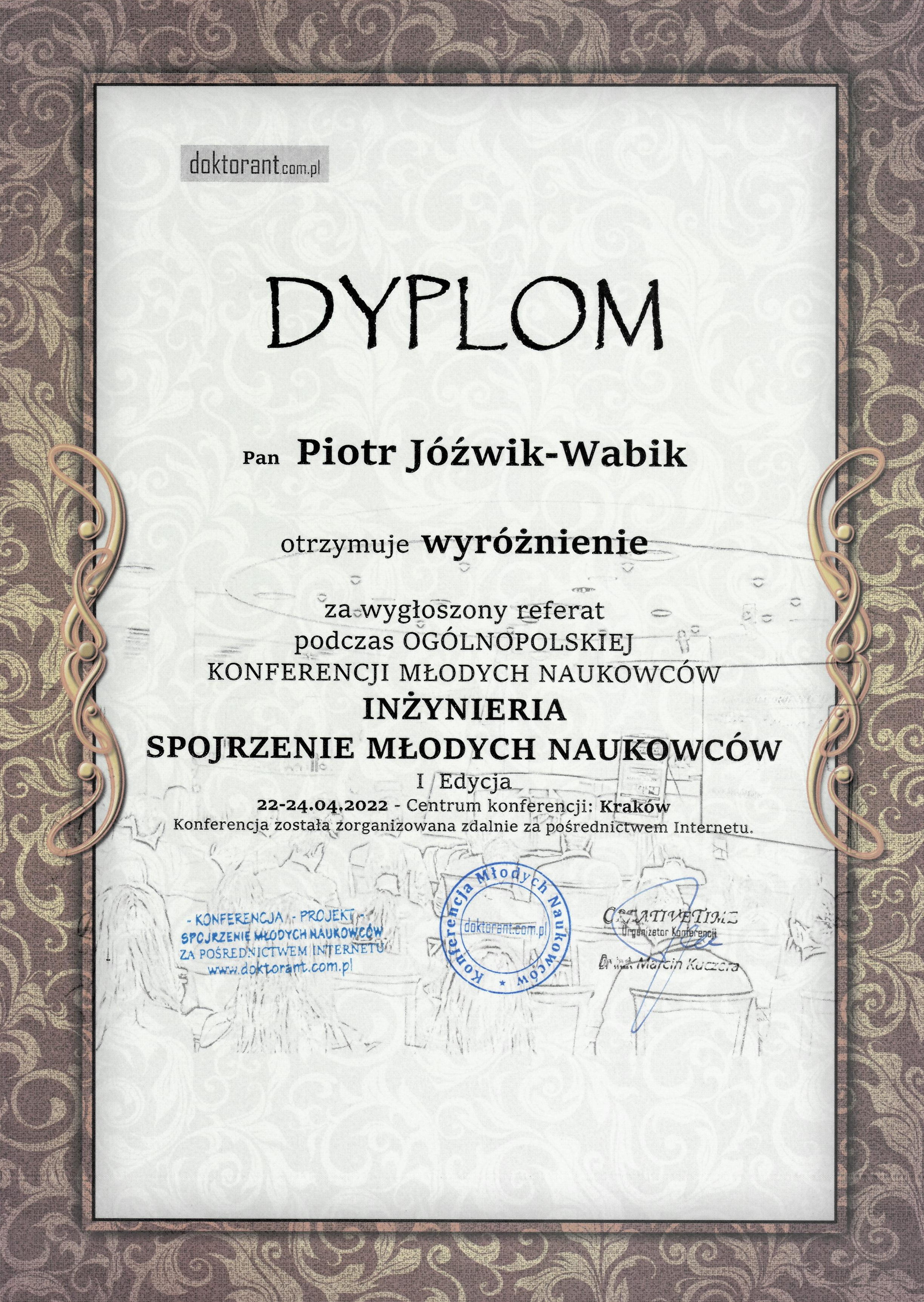 We are pleased to announce that a doctoral student in the SUTO team, Piotr Jozwik-Wabik, has received a distinction for his presentation given at the doctoral students' conference "Engineering - a view of young scientists". This is his first scientific conference in academic career. The topic of presentation was: "Utilization of machine learning in enhancement of astronomical images". We congratulate him on this important achievement and look forward to further successes.
We are pleased to announce that a doctoral student in the SUTO team, Piotr Jozwik-Wabik, has received a distinction for his presentation given at the doctoral students' conference "Engineering - a view of young scientists". This is his first scientific conference in academic career. The topic of presentation was: "Utilization of machine learning in enhancement of astronomical images". We congratulate him on this important achievement and look forward to further successes.
Tonantzintla-1m in SUTO
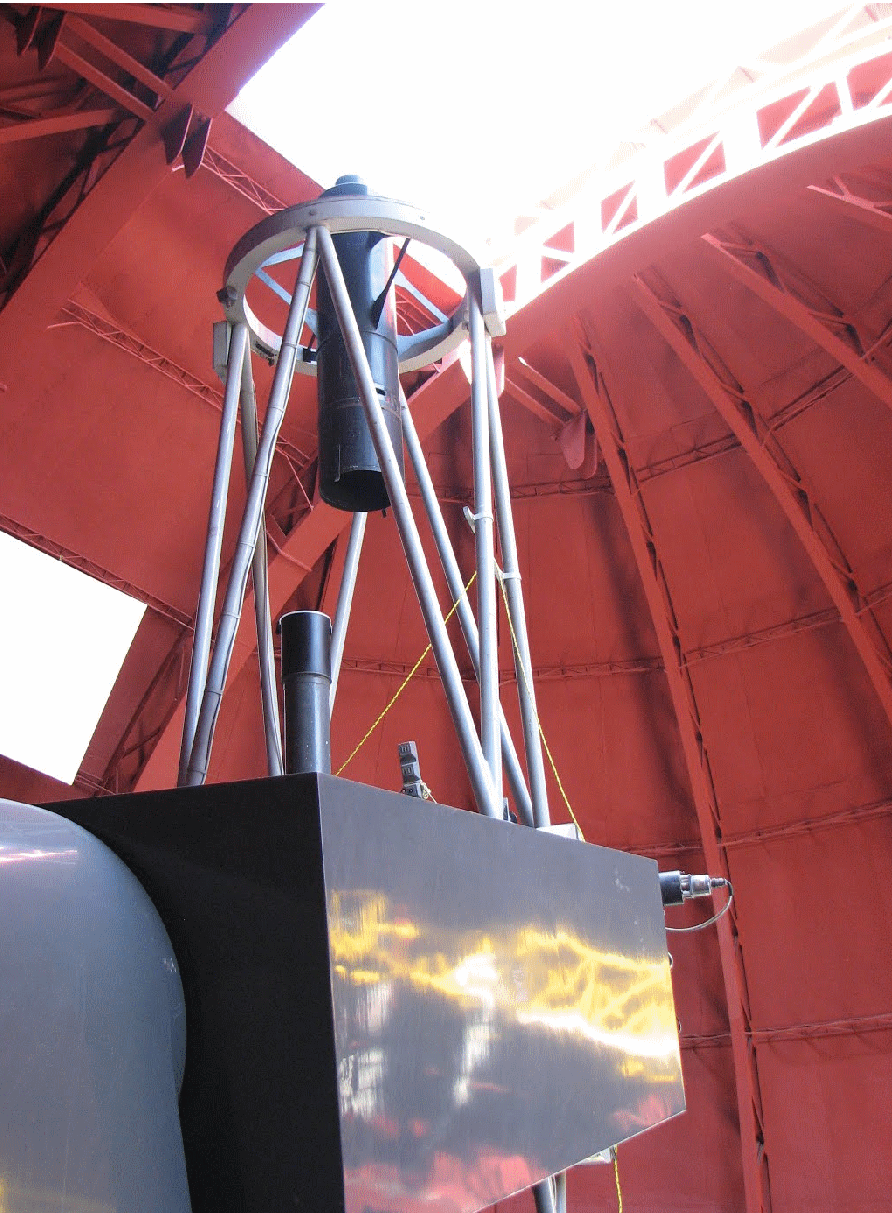 We are pleased to announce that Dr. Valeri Orlov has decided to join the work conducted within the SUTO group. His specialty is high-resolution observations, in particular speckle interferometry. He usually uses the 1m telescope at Tonantzinta, occasionally observing on the largest Mexican telescopes at San Pedro Martir. We are currently working on deploying the 1m telescope for routine observations for the TESS mission.
We are pleased to announce that Dr. Valeri Orlov has decided to join the work conducted within the SUTO group. His specialty is high-resolution observations, in particular speckle interferometry. He usually uses the 1m telescope at Tonantzinta, occasionally observing on the largest Mexican telescopes at San Pedro Martir. We are currently working on deploying the 1m telescope for routine observations for the TESS mission.
LCO observations support
 SUTO members have been included in a group processing data from Las Cumbres Observatory (LCO) network for the follow-up of the TESS satellite mission. We wish to support the team led by Dr. Karen Colins of Harvard University and the TESS mission discovering thousands of new extrasolar planets. We also provide our own observations in this follow-up, but the capabilities of 1m LCO telescopes allow for confirming much smaller, Earth-size, planets discovered by TESS orbital telescope.
SUTO members have been included in a group processing data from Las Cumbres Observatory (LCO) network for the follow-up of the TESS satellite mission. We wish to support the team led by Dr. Karen Colins of Harvard University and the TESS mission discovering thousands of new extrasolar planets. We also provide our own observations in this follow-up, but the capabilities of 1m LCO telescopes allow for confirming much smaller, Earth-size, planets discovered by TESS orbital telescope.
Fast Radio Bursts
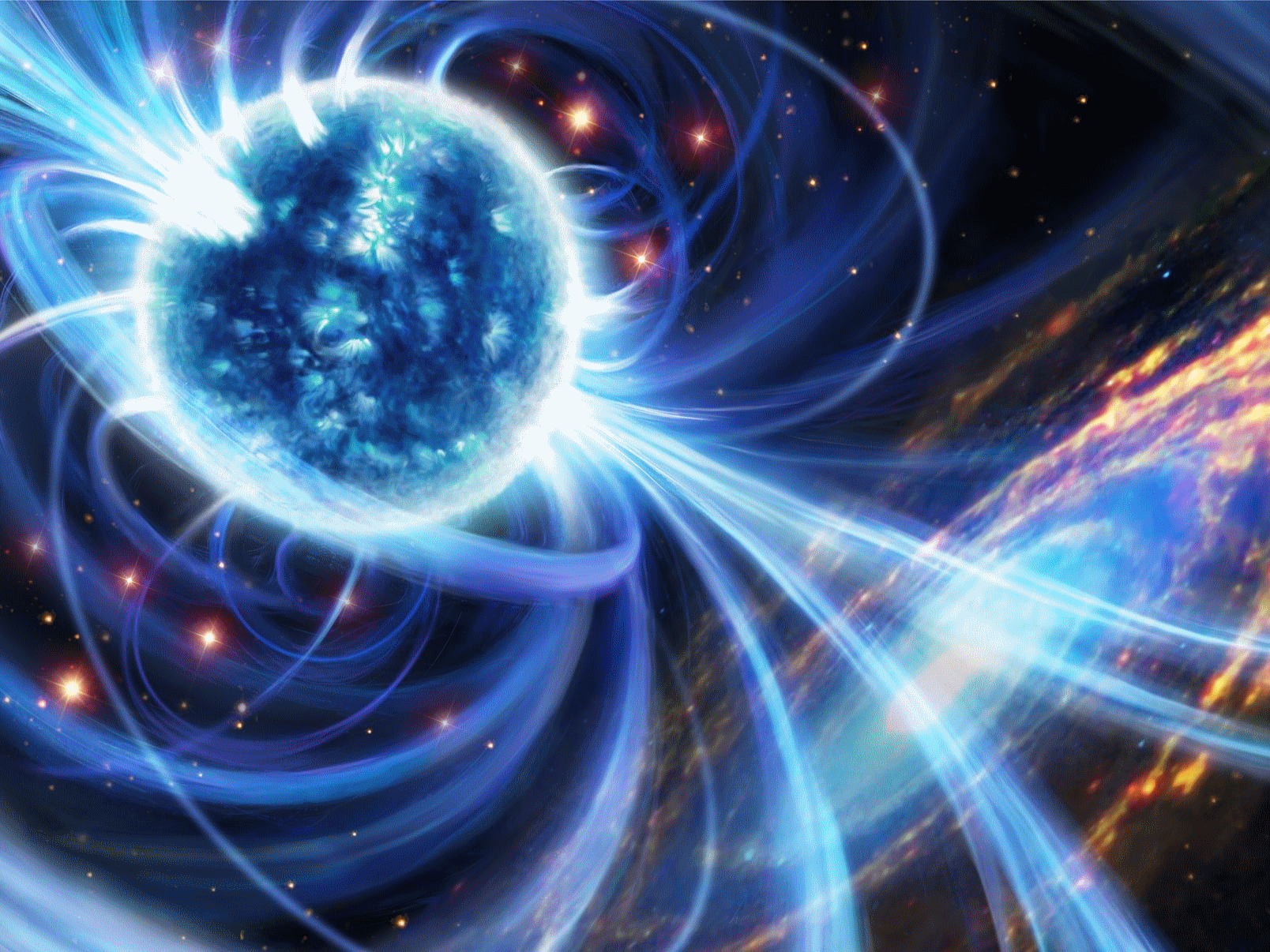 SUTO Otivar observatory has started optical observations of fast radio bursts (FRB) in cooperation with radio astronomers from Toruñ (Dr. Marcin Gawroñski from the Institute of Astronomy, UMK). FRBs are currently one of the hottest topics in modern astrophysics. Accidentally discovered in 2007 during a review of archival data, now intensively observed, they are still a great mystery. More on this topic in article at https://portal.umk.pl/pl/article/kosmiczna-zagadka-blyskow-radiowych
SUTO Otivar observatory has started optical observations of fast radio bursts (FRB) in cooperation with radio astronomers from Toruñ (Dr. Marcin Gawroñski from the Institute of Astronomy, UMK). FRBs are currently one of the hottest topics in modern astrophysics. Accidentally discovered in 2007 during a review of archival data, now intensively observed, they are still a great mystery. More on this topic in article at https://portal.umk.pl/pl/article/kosmiczna-zagadka-blyskow-radiowych
SUTO in BHTOM
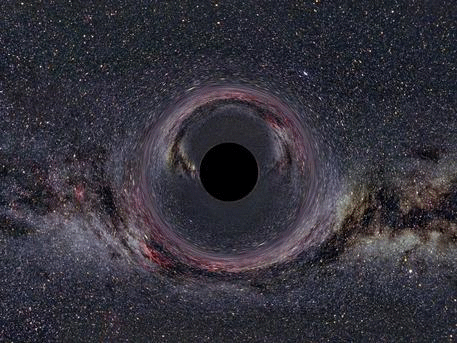 SUTO Observatories join the BHTOM monitoring portal (https://bh-tom.astrolabs.pl/) dedicated to manage and conduct ground-based follow-up observations in search of gravitational microlensing phenomena. The project, which combines the capabilities of observatories from Poland and abroad, is led by Prof. Lukasz Wykrzykowski of Warsaw University.
SUTO Observatories join the BHTOM monitoring portal (https://bh-tom.astrolabs.pl/) dedicated to manage and conduct ground-based follow-up observations in search of gravitational microlensing phenomena. The project, which combines the capabilities of observatories from Poland and abroad, is led by Prof. Lukasz Wykrzykowski of Warsaw University.
AAVSO award
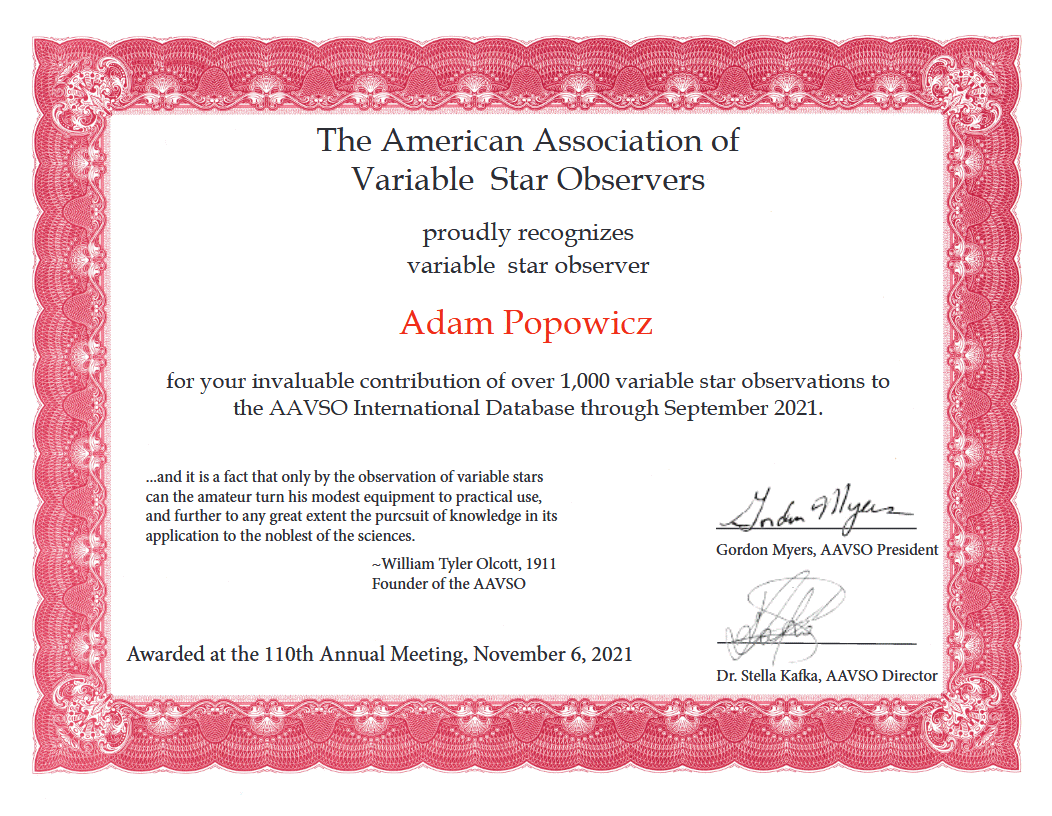 At the 110th annual meeting of the AAVSO (American Association of Variable Star Observers), we received an award for over 1000 measurements submitted to the AAVSO database. This organization has been collecting photometric data on variable stars for over 100 years and provides an excellent venue for meeting the needs of astronomers with the opportunities offered by small astronomical observatories.
At the 110th annual meeting of the AAVSO (American Association of Variable Star Observers), we received an award for over 1000 measurements submitted to the AAVSO database. This organization has been collecting photometric data on variable stars for over 100 years and provides an excellent venue for meeting the needs of astronomers with the opportunities offered by small astronomical observatories.
First GRB alert follow-up
 Our SUTO-Pyskowice observatory took part for the first time in a rapid response to the Gamma Ray Burst (GRB) alert 220319A as a part of GRANDMA telescope network. The first observations started 14 minutes after the alert trigger time. GRB alerts require very fast response to observe and analyze optical afterglow to better characterize the source of such transient and very energetic events in our Galaxy. More information about our observation at https://gcn.gsfc.nasa.gov/gcn3/31785.gcn3
Our SUTO-Pyskowice observatory took part for the first time in a rapid response to the Gamma Ray Burst (GRB) alert 220319A as a part of GRANDMA telescope network. The first observations started 14 minutes after the alert trigger time. GRB alerts require very fast response to observe and analyze optical afterglow to better characterize the source of such transient and very energetic events in our Galaxy. More information about our observation at https://gcn.gsfc.nasa.gov/gcn3/31785.gcn3
ExoClock - publication
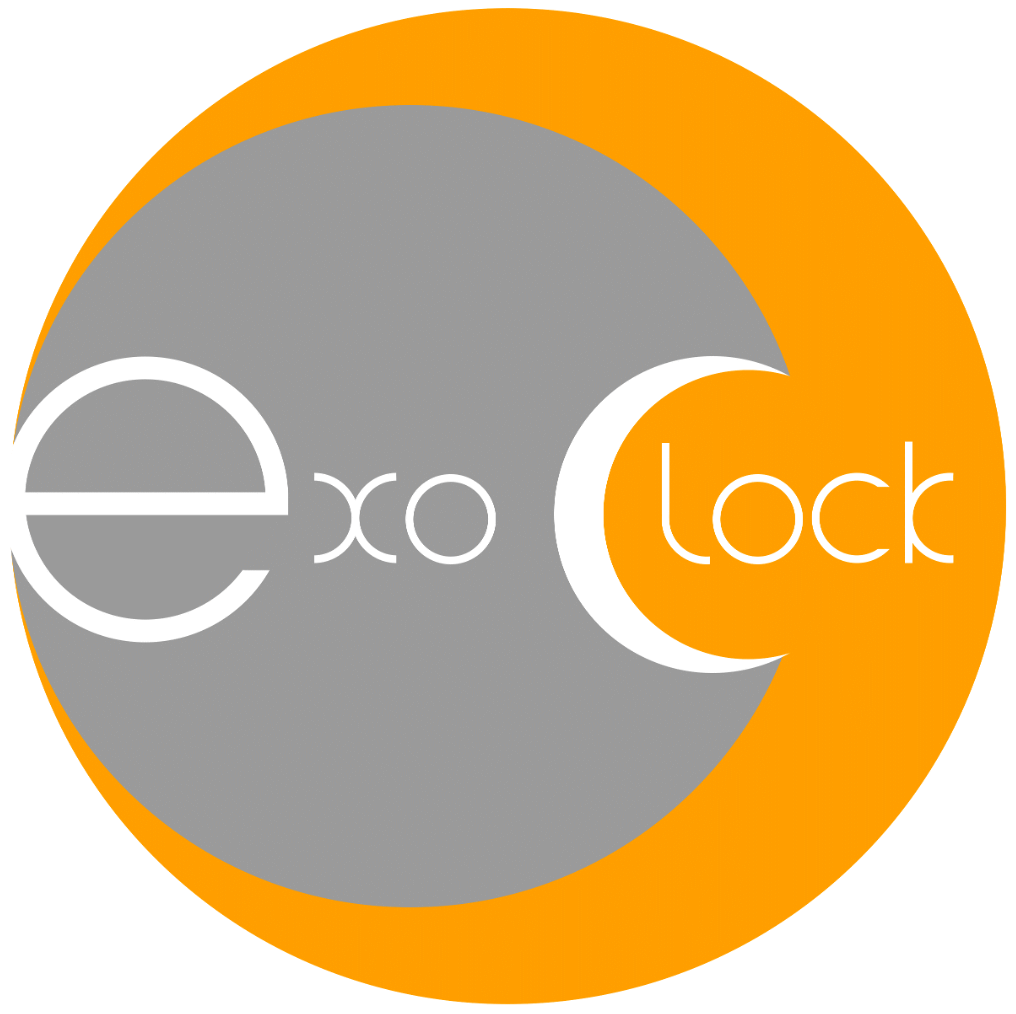 The first publication in the ExoClock project in which we participate has appeared. The paper presents the results of measurements of exoplanet transits from the last year. The paper is published in the prestigious The Astrophysical Journal Supplement Series, at https://iopscience.iop.org/article/10.3847/1538-4365/ac3a10.
The first publication in the ExoClock project in which we participate has appeared. The paper presents the results of measurements of exoplanet transits from the last year. The paper is published in the prestigious The Astrophysical Journal Supplement Series, at https://iopscience.iop.org/article/10.3847/1538-4365/ac3a10.
SUTO Solar - paper ready
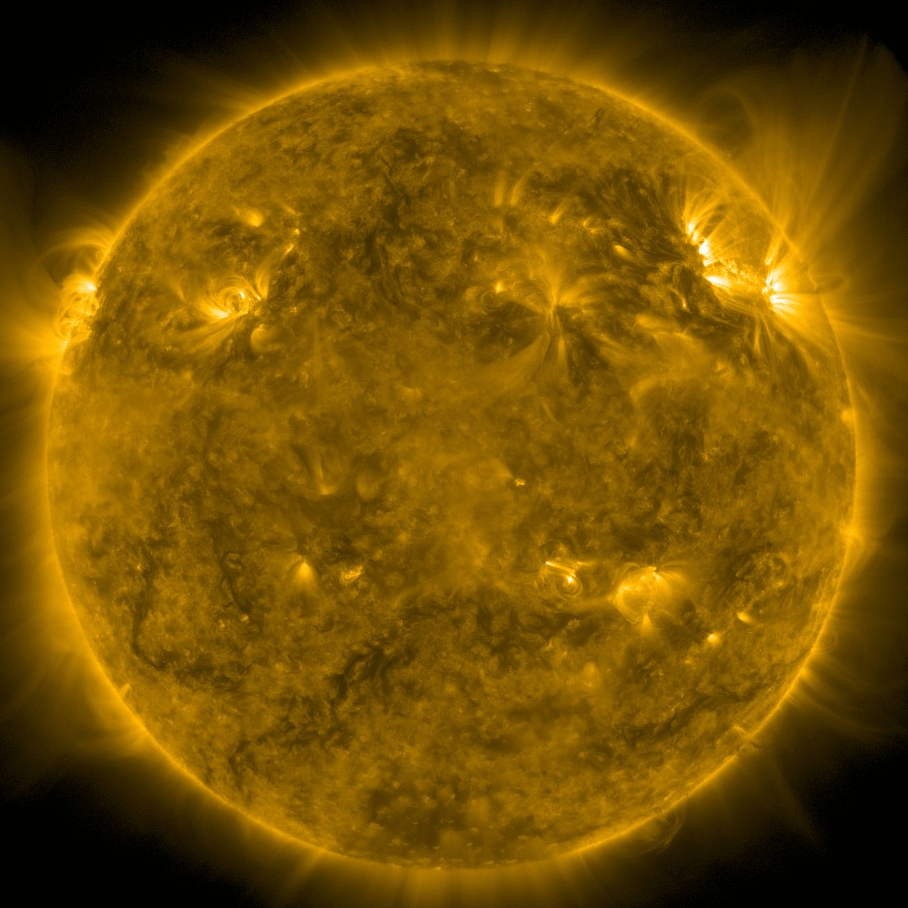 The paper describing the operation of the SUTO Solar observatory has been completed. The paper has been written in cooperation between SUTO and the University of Wroclaw, UNAM University in Mexico and the Polish Astronomy Association. The paper has been submitted for peer review to the SPIE Journal of Astronomical Telescopes and Instrumentation.
The paper describing the operation of the SUTO Solar observatory has been completed. The paper has been written in cooperation between SUTO and the University of Wroclaw, UNAM University in Mexico and the Polish Astronomy Association. The paper has been submitted for peer review to the SPIE Journal of Astronomical Telescopes and Instrumentation.
